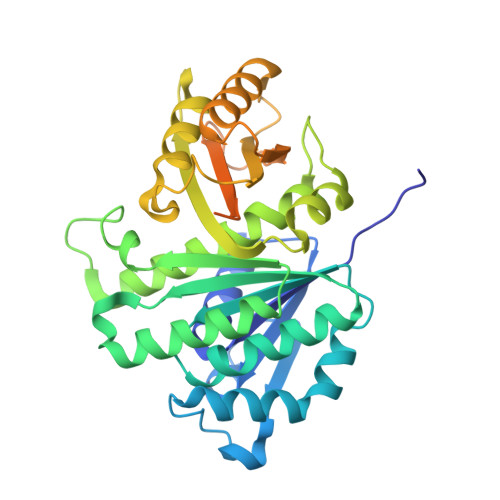Lateral interactions between protofilaments of the bacterial tubulin homolog FtsZ are essential for cell division
Guan, F., Yu, J., Yu, J., Liu, Y., Li, Y., Feng, X.H., Huang, K.C., Chang, Z., Ye, S.(2018) Elife 7
- PubMed: 29889022
- DOI: https://doi.org/10.7554/eLife.35578
- Primary Citation of Related Structures:
5ZUE - PubMed Abstract:
The prokaryotic tubulin homolog FtsZ polymerizes into protofilaments, which further assemble into higher-order structures at future division sites to form the Z-ring, a dynamic structure essential for bacterial cell division. The precise nature of interactions between FtsZ protofilaments that organize the Z-ring and their physiological significance remain enigmatic. In this study, we solved two crystallographic structures of a pair of FtsZ protofilaments, and demonstrated that they assemble in an antiparallel manner through the formation of two different inter-protofilament lateral interfaces. Our in vivo photocrosslinking studies confirmed that such lateral interactions occur in living cells, and disruption of the lateral interactions rendered cells unable to divide. The inherently weak lateral interactions enable FtsZ protofilaments to self-organize into a dynamic Z-ring. These results have fundamental implications for our understanding of bacterial cell division and for developing antibiotics that target this key process.
Organizational Affiliation:
Innovation Center for Cell Signaling Network, Zhejiang University, Hangzhou, China.















